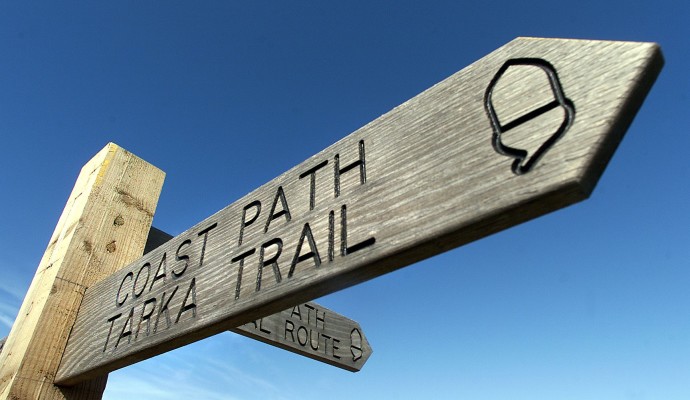Interesting information
Okehampton lies on the northern edge of Dartmoor and was once an important wool centre. The waterwheel helped to power Town Mills. The mills were grist mills, for the grinding of corn, and were then also used as a woollen mill. The stream alongside the path is the leat used to power Town Mills. It flows out of the East Okement River, which is reached at the end of the woodland path.
Simmons Park was given to Okehampton by local man Sidney Simmons in 1907. Much of the park was formerly semi-moorland and some of the modern landscape reflects this. There is a Swiss-style Chalet Treloar, named after the Lord Mayor of London who conducted the park opening.
Part of the walk follows the Tarka Trail. Note the paw print waymark on the post which is the Trail’s waymark. The Tarka Trail follows the journey through Devon of Tarka the Otter in the book of that name.
Fatherford is a stone viaduct which carried the main line of the London and South Western Railway between Waterloo and Plymouth. It now only carries trains taking stone from the quarries at Meldon, the Dartmoor Railway runs between Okehampton and Samford Courtney and a summer Sunday service between Exeter and Okehampton. Next to it is the modern viaduct carrying the A30 Okehampton by-pass, built in the late 1980s.
Once on the Moor, stunning views are obtained across the centre of Devon. On a clear day the edge of Exmoor can be seen. At East Hill, the stone pillar marks the height of 1152 feet/349m, although the very highest point is one metre higher. Okehampton is now visible almost as an aerial view. On the skyline beyond Okehampton Army Camp is Yes Tor and High Willhays. These are the highest points in England south of the Peak District.

